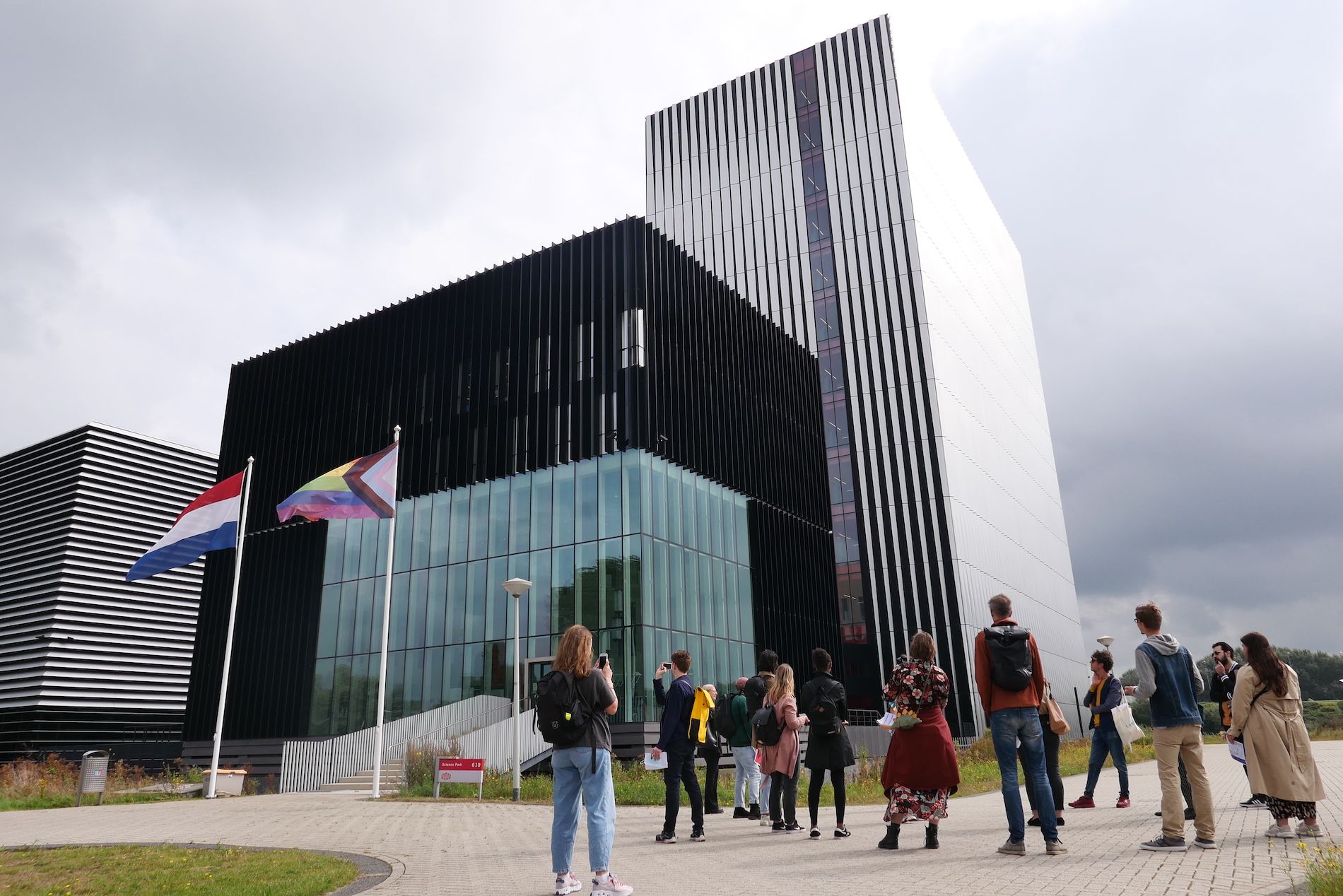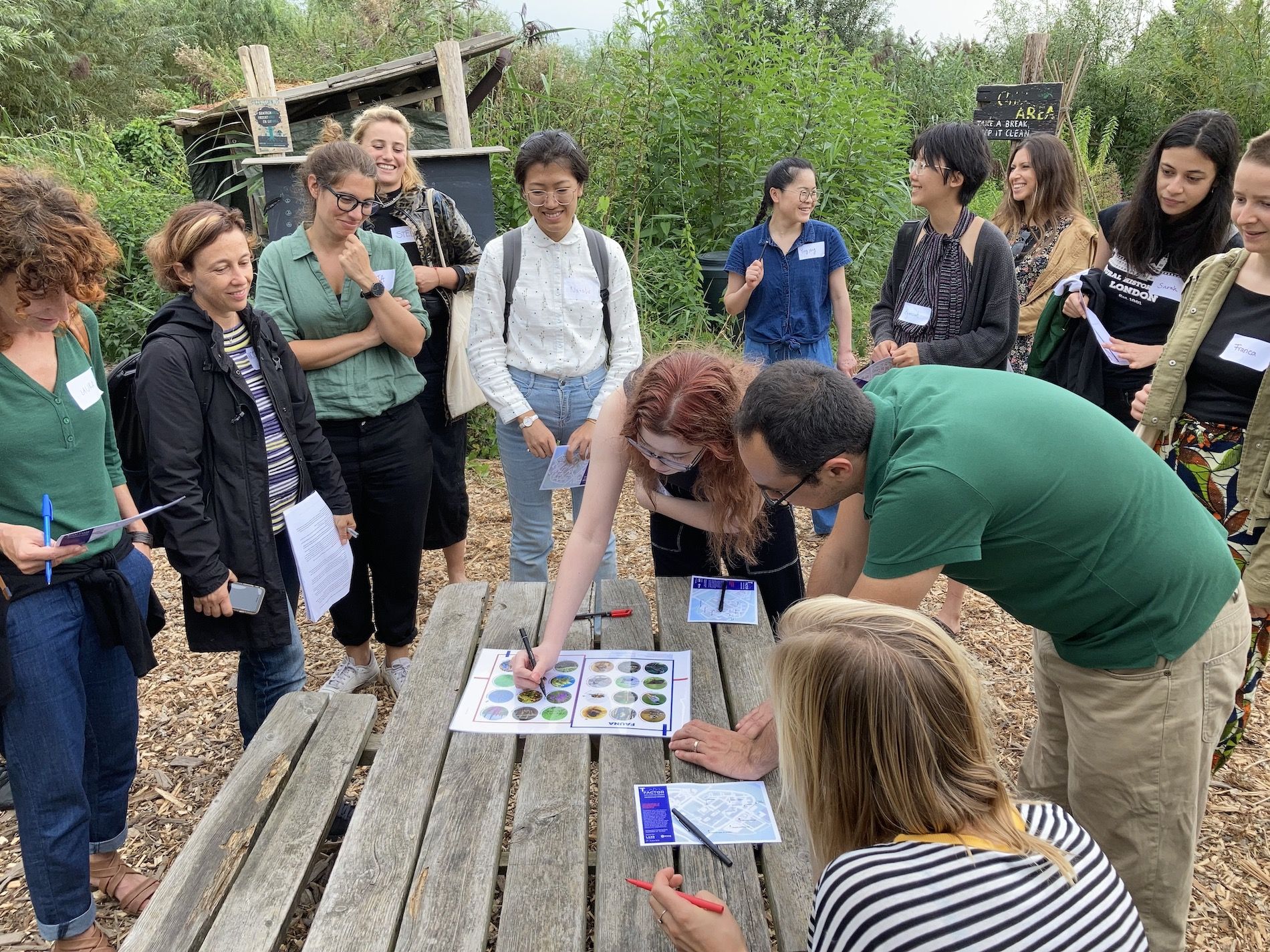More than 30 youths rediscover sensations and nature on everyday routes
Transformation Labs, T-labs in short, are the knowledge engines of the T-Factor project. During the second half of 2021, T-Labs organised experimental activities, called T-Probes, meant to inspire the pilots with new perspectives and test new approaches of public space activation in the meanwhile.
T-Lab 4, focussing on Urban design for sociality and wellbeing, together with T-Lab 3, Citizen-led Smartness, implemented their T-Probe at Amsterdam Science Park (ASP), working on two challenges: How can we renew our relationship with nature in urban environments? and ‘How can we support the wellbeing of humans and non-humans in the everyday digital world?. The probe consisted of the development of a participatory map and a collective “ecology of attention”, testing the perception of those who experience the space in their everyday life.
Moreover, this event tested a concept of biodiversity education of ASP related to meanwhile uses and spaces, together with local actors.
Earlier the year, in July 2021, we performed a first site survey and held a stakeholder dialogue to get a deeper insight into the area and define aims and activities of the probe. The specific itinerary is identified by T-Lab 4 and T-Lab 3 based on the site visit and the outcome of talks with local stakeholders.

Emotional and perceptional maps
Four groups of local actors (students of RAvB, elementary school students from Amsterdam and workers of UvA and ASP) went on an interactive tour around ASP to discover its nature and detect their emotions while being in urban wilderness. During the activity they were disconnected from their mobile devices. For that, T-Lab 3 built the Data Nest, a data centre mockup, as a device to challenge tech ubiquity in urban landscapes. Participants had to leave their smartphones in the Data Nest as an entry ritual to the walk. At the end of the workshop, the installation helped explaining, how a data centre works. This additional exercise invited the participants to reflect on the false immateriality of our digital everyday and its impact on the environment.
T-Lab 4 provided different activities across six stations around the science park to discover awareness and sense of space, as well as visionary perspectives. The chosen method enabled participants to get in touch with each other and discuss what they are perceiving.

Students, workers of ASP, young professionals and children went on a walk over the southern part of ASP for about 90 minutes, stopping at the different stations. At each stop, they were provided with tools for heightened perception. The selected activities stimulated different levels of interaction with the space and its perception. The participants were asked to note their and impressions and feelings regarding:
- The relationship with urban nature (desired or imagined)
- The perception of urban space (critical issues, ideas)
- Use of public open spaces (desired or already done)
- The perception of natural space
- The perception of social relationships in space
The notes were collected on specific cards that allowed station-related note-taking. After the workshops, these cards were transformed into emotional maps of the space. Like this, it was able to detect possible topics and locations of future temporary activities.
The probe was a way to generate awareness about datafication and ubiquity of tech, while collecting inputs for meanwhile experiences. The involving methodology and the distribution of situation-related knowledge helped a better understanding of the context between nature, wellbeing and a more aware use of technology.


Key Learnings
- Professionals working at ASP as well as students discovered new places nearby their regular routes.
- Young professionals reckoned the potential of ASP open spaces.
- Kids enjoyed the activities proposed in the stations by deploying their creativity, exploring non-human dimensions and inter-personal ties in public space.
- The permaculture garden was elected as the favourite place, the place where most of the participants felt good.
- The participants mentioned having reached a superior level of sensing and understanding of their environment thanks to the activity.
- The participants proposed valuable ideas for possible meanwhile uses.
- Restorative areas and experiences of wellbeing that provide a pause from the digitalised everyday, would be extremely valuable for ASP users: the way they moved in some places reflected their natural behaviour towards nature, space and architecture, creating an improved awareness of themselves.
- Other beings in off-the-grid experiences form an antidote to anxiety and digital fatigue, enhance social bonds and foster more intensive interaction.
- Understanding the environmental impact of “the internet” through tangible examples and seeing a data centre in the first person was an eye-opener for some of the participants.


